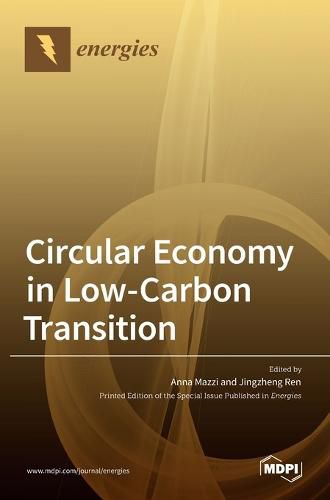Readings Newsletter
Become a Readings Member to make your shopping experience even easier.
Sign in or sign up for free!
You’re not far away from qualifying for FREE standard shipping within Australia
You’ve qualified for FREE standard shipping within Australia
The cart is loading…






This title is printed to order. This book may have been self-published. If so, we cannot guarantee the quality of the content. In the main most books will have gone through the editing process however some may not. We therefore suggest that you be aware of this before ordering this book. If in doubt check either the author or publisher’s details as we are unable to accept any returns unless they are faulty. Please contact us if you have any questions.
The circular economy, as a new business model that is different from the economy, can achieve the reuse and recycling of waste for waste minimization, improve the efficiency of resource utilization, and mitigate carbon emissions. It is no doubt that promoting the development of the circular economy can facilitate the transition to low-carbon processes and carbon-neutral development. However, there are still several questions that need to be answered: (1) How can the circular economy contribute to a low-carbon transition? (2) How do we address the fact that the circular economy model may also cause some new environmental problems, and how should we identify what the most environmentally friendly solution is among multiple alternatives for the circular economy? (3) Governmental regulation, policies and incentives play a significant role in promoting the development of the circular economy, so what are the policy instruments that can contribute to its development? (4) How can technological progress and solutions contribute to the circular economy? (5) How can environmental impact assessments contribute to the circular economy? (6) How can we achieve a circular economy or low-carbon transition through changes in consumption behaviors? In order to answer the above-mentioned questions, we launched a Special Issue in Energies. There are a total of six papers published in this Special Issue. This e-book collects these papers to build a platform for sharing advanced concepts, tools and methods for the users to take actions to achieve a circular economy.
$9.00 standard shipping within Australia
FREE standard shipping within Australia for orders over $100.00
Express & International shipping calculated at checkout
This title is printed to order. This book may have been self-published. If so, we cannot guarantee the quality of the content. In the main most books will have gone through the editing process however some may not. We therefore suggest that you be aware of this before ordering this book. If in doubt check either the author or publisher’s details as we are unable to accept any returns unless they are faulty. Please contact us if you have any questions.
The circular economy, as a new business model that is different from the economy, can achieve the reuse and recycling of waste for waste minimization, improve the efficiency of resource utilization, and mitigate carbon emissions. It is no doubt that promoting the development of the circular economy can facilitate the transition to low-carbon processes and carbon-neutral development. However, there are still several questions that need to be answered: (1) How can the circular economy contribute to a low-carbon transition? (2) How do we address the fact that the circular economy model may also cause some new environmental problems, and how should we identify what the most environmentally friendly solution is among multiple alternatives for the circular economy? (3) Governmental regulation, policies and incentives play a significant role in promoting the development of the circular economy, so what are the policy instruments that can contribute to its development? (4) How can technological progress and solutions contribute to the circular economy? (5) How can environmental impact assessments contribute to the circular economy? (6) How can we achieve a circular economy or low-carbon transition through changes in consumption behaviors? In order to answer the above-mentioned questions, we launched a Special Issue in Energies. There are a total of six papers published in this Special Issue. This e-book collects these papers to build a platform for sharing advanced concepts, tools and methods for the users to take actions to achieve a circular economy.